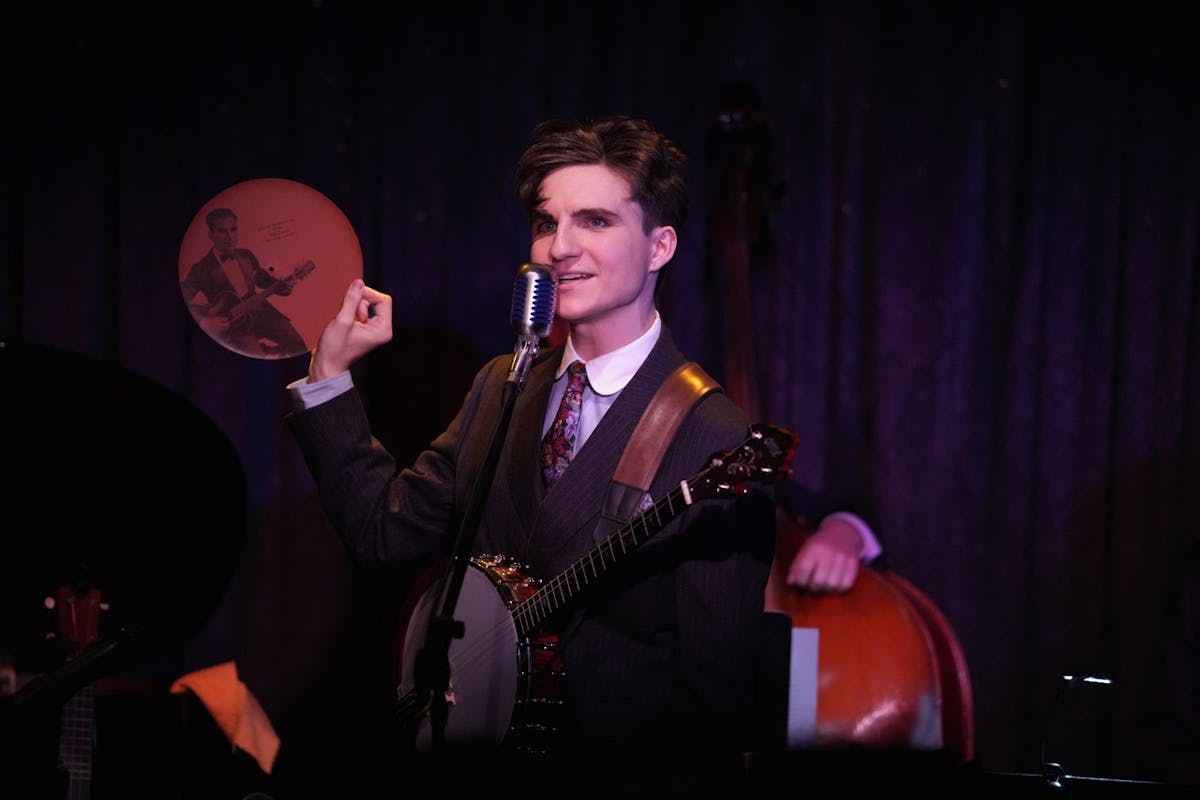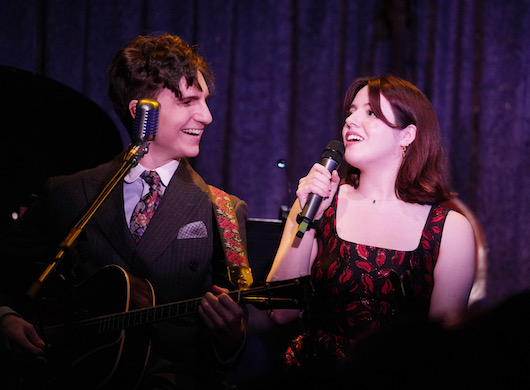Home Is Where Bryce Edwards Is
Bright-eyed and bushy tailed, the 22-year-old singer and multi-instrumentalist is full of the youthful optimism we associate with the leading men of the Jazz Age, on which he focuses his show.

‘The Bryce Edwards Frivolity Hour’
Don’t Tell Mama, New York City
While introducing the first ballad of “The Bryce Edwards Frivolity Hour,” the singer and multi-instrumentalist Bryce Edwards refers to the 1931 song “Home (When Shadows Fall)” as “a tune you might know from Louis Armstrong or ‘The Shining,’ depending on your taste.” Actually, some of us know it from Nat King Cole’s 1950 recording, but since Cole almost certainly learned it from Armstrong, it essentially amounts to the same thing.
At first, placing a song about home so near the start of a show seems like an out-of-the-box idea: A singer usually will position most such warmly nostalgic material closer to the end, or, as Marilyn Maye did at Carnegie Hall the other night, in the second half. As an idea, though, the concept of “home” is central to Mr. Edwards’s entire value proposition, as it were, as an entertainer.
Most of his show is about the 1920s, though he moves both forward and backward from that vantage point, to earlier and later in the previous century. The roaring ’20s is essentially home for nearly all of American musical culture; it saw the first flourishing of jazz as well as the Great American Songbook, with King Oliver, Jelly Roll Morton, and Bix Beiderbecke on one hand, and Rodgers & Hart, Cole Porter, and the Gershwin Brothers on the other.
Plus, it was the first great era of both the movies and musical theater. So by lingering on what Scott Fitzgerald dubbed the Jazz Age, Mr. Edwards is, indeed, taking us all home.
Bright-eyed and bushy tailed, as they used to say, Mr. Edwards is full of the youthful optimism we associate with the leading men of the era: If Harold Lloyd could sing, this is what he’d sound like. Mr. Edwards is steeped in the early crooners, including such delightfully idiosyncratic quasi-tenors as Gene Austin and Rudy Vallee as well as the more aggressively masculine baritone of Bing Crosby.
He’s even more deeply immersed in those pioneering string-playing headliners Cliff Edwards (“Ukulele Ike”) and the first guitar star, Nick Lucas. Mr. Edwards also shares a unique spiritual affinity with the underappreciated Tiny Tim, who miraculously made the 1920s relevant to the Summer of Love.
Mr. Edwards lovingly indulges a unique fascination for early attempts to incorporate nonverbal human noises into song. He breaks out a turn-of-the-century device called the “songophone,” essentially a kazoo on steroids. From it, he demonstrates how the vigorously wordless sounds that Ukulele Ike and others called “eefin’” — most explosively on “Everything Is Hotsy-Totsy Now” — anticipated the full-on scat singing of Armstrong and Ella Fitzgerald.
He doesn’t just recreate specific individual records, he absolutely nails the entire idiom, which at first necessitates recognizing that Jazz Age music is indeed an idiom unto itself, much like baroque music, bebop, or bluegrass are all idioms. That extends to his singing as well as his spoken moments, in which he glories in nerding out over ancient arcana — parading a succession of archaic instruments — while somehow simultaneously putting himself down for doing the same.
Some will think it’s remarkable that a 22-year-old could so fully inhabit that bygone era. In retrospect, though, it seems clear that youth is essential in terms of understanding that pivotal moment in the American psyche, just a dream ago, when the world was young and everything seemed possible.

Mr. Edwards underscores that by bringing out his special guest singer, introduced as his “steady gal,” the equally perky “bright young musical theater chanteuse” Reilly Wilmit. She joined him for duets on “Two Sleepy People” (with the original signature quote from composer Hoagy Carmichael’s own “Stardust”) and “Shine On Harvest Moon.” Most of us in the house were at least as old as his parents, and the twosome fed our collective fantasy about what we wish our own youth had been like, an idealized depiction of a perfect young adulthood that never was.
Mr. Edwards, working with bassist and pianist Conal Fowkes and trumpeter Scott Ricketts, covers all the bases of the era, from zippy novelties and rhythm songs like “Everybody Loves My Baby” to blues (“St. James Infirmary”) and sentimental laments in 3/4 (“Sighing”). Many are obscure to all but diehard ’20s ubergeeks, but there are some well-known standards, such as “Dinah” and “If I Could Be With You One Hour Tonight.”
After building to a rousing finish with “Please Don’t Talk About Me When I’m Gone” and “Avalon,” the crowd collectively pushed him into an encore of the 1917 “Darktown Strutter’s Ball” (by the great African-American songwriter Shelton Brooks and thankfully not yet a casualty of cancel culture) and we got on our feet and applauded again. Why shouldn’t we? For 80 minutes, Bryce Edwards had made time stand still and brought us all back home, if only in our dreams.

